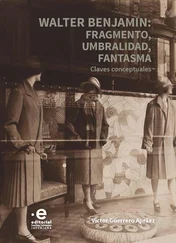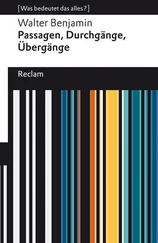In this sense, the position of the skilled worker has also changed. In very many cases, he can no longer count on keeping his job. But the prospects of quickly adapting to a new job are much greater for him than for an unskilled worker. We have just mentioned the term “career counseling.” Qualified authorities, so I hear, have just informed you about this topic in numerous reports on Southwest German Radio. Many of you will have gained insight into the great system of tests and manifold methods of evaluation, into the powerful laboratory that has so rapidly generated a new science, the science of work, particularly in Germany. However, today we will scarcely touch upon the concept that will be most familiar to you: the concept of the performance test. Just as we will merely glance at career counseling. The science of work has two sides: on the one hand, it studies the individual, to determine for which job he is particularly suited; on the other, it approaches the job itself and enquires: What hidden, and therefore strongest, drives in a person are best suited to individual jobs? Above all: how does the job develop and change — not just the task itself, but the milieu in which it occurs, the transference of job habits to life at home, and the character of colleagues — and how does that all change and develop a person?
How does the job impact the individual, and through what? This is the question to which I would not only like to call your attention today, but for which I would also like to ask for your assistance. Hopefully, the following explanations will make the purpose of our request, which the radio station has asked me to direct to you, completely clear. The request: to send to the station communications of any kind in which you describe the influence of your own job on your mood, your views, your relationship to your colleagues, what strikes you when you think about the person you were when you took the job compared to the person you became in the job. It is possible that you would rather, or more easily, make these observations about colleagues than about yourself. Such communications are equally welcome. The material you provide will be reviewed in a second report, and presented along with the conclusions that can be drawn. 2
How does the job impact the individual, and through what? You know, this question was effectively resolved at one time, centuries ago. It happened in the guilds; their members’ entire lives, down to the most private matters, were consciously subordinated to the necessities and forms of the work process. Since the last remnants of the guild system disappeared in the nineteenth century, these questions, which are of such importance to the life of every individual, were disregarded for a long time. Lately that has changed, because of the decisive advances made in the science of work, newly subjecting the unilluminated, unscrutinized course of everyday work life to the control of human cultural will. There have been three advancements in the science of work: the first in sociology, in the form of research into the social structure of the professions; the second in psychology, in the form of research into the so-called work environment; and finally, the new American movement of behaviorism. This last, disconcerting concept demands explanation. “To behave” 3means sich verhalten. The foremost proponent of this new science of Sichverhalten , 4Watson — some of whose works have been translated and published by Deutscher Verlagsanstalt, Stuttgart — declares that people’s habitual behavior is the foundation upon which all of anthropology rests. 5It is clear why this approach places the science of work and jobs on a new, much broader basis. In what other environment are habits formed more easily, where else are they more ingrained, where do they include whole groups more intensely, than in the workplace? This behaviorism inherently contrasts with the psychology of the individual, which attempts to understand the behavior of the individual essentially through his nature. To the contrary, nature is important to behaviorism only in its malleability. Behaviorism is interested in the profoundly transformative, profoundly invasive effects of the work process on character.
We have just received a book that is a significant and gratifying indication that the science of business is recognized everywhere. It is German Occupational Studies, published by the Bibliographic Institute in Leipzig. 6You can get an idea of the scope of the work, on which a number of specialists collaborated, when you consider that it surveys all German jobs in their incalculable specializations. Its vibrancy can best be illustrated with an example. I will not pick one out at random. What the newest efforts in this field have in common is that they capture the attitude represented in each job in terms of gesture, affinity, and ability, independent of and detached from the material of work. Thus, in a way, they put the example to the test by describing personality types, for which certain jobs would have to be invented if they did not yet exist. Thus I present to you, from German Occupational Studies, the description of a cobbler who is actually a journalist type. The author of the following pages is Peter Suhrkamp.
The particular nature of the journalistic person can be discovered in places where this person can still live without contact with newspapers. One can still find such people today in villages where no newspapers are published. In my hometown there was a shoemaker ; but the last thing one could ask from him was that he make shoes. He could not stay in his workshop. Instead, he was on the go and worked wherever an opportunity beckoned, whatever it might be. He cleaned and repaired clocks. And when one of the cattle or a child was sick on a farm, he turned up. If a threshing machine was out of order at a farm, there he was. You didn’t go fetch him (because no one counted on him) but he was everywhere where anything happened, where “something was going on,” as if he could sense it. He came as if by coincidence, stood around for a while and chatted, and then he got to work. And if help was needed with anything, there was nothing that he could not fix. Things he could have no knowledge of — the mowing machines, for example, were then completely new — he adjusted; after a short time looking at a machine, he would have a better understanding of it than the blacksmith. When I saw him for the last time, just before the war, an airplane flew over the village. He shook his head and said, “That thing is not right. Something’s not right with the motor, anyone can see that.” He tried to explain to me then that there are birds that can’t fly, that fly wrong, sparrows, for example. In the village he was considered a drinker, although he was never drunk, because one could meet him in any one of the village’s three pubs; one could find him there late at night disputing with the teacher or with a traveler. I will never forget one rainy day when we waited together, pressed into a haystack, for the weather to clear up, and he developed for me, the young boy, his theory of starry space; it was as beautiful as a fairy tale.
It was said that he visited the pastor and argued with him. His reputation was not good. He had his celebratory days, certainly! If he was successful at doing something the experts had failed to do (and, by the way, he never accepted payment for his work, and so lived, as one can imagine, in poverty), then he made a celebration of it and as many people as possible had to participate; he sat in a circle then and told stories tirelessly. But in general he was not respected. He was described to us children as a wastrel. (Our parents were people with Bismarck’s morals.) But when the cobbler came, people were friendly; they were afraid of him because of his witty, barbed remarks and because of the little ditties he made up about the villagers, which persisted among the people as if they were carved in stone. On the evening of an election day, he surprised the village with a caricature of Friedrich Naumann; it was stretched over a wooden box, and in the box a carbide lamp burned. 7This poster was the first illuminated advertisement to appear in a village (it was not long after 1900).
Читать дальше












